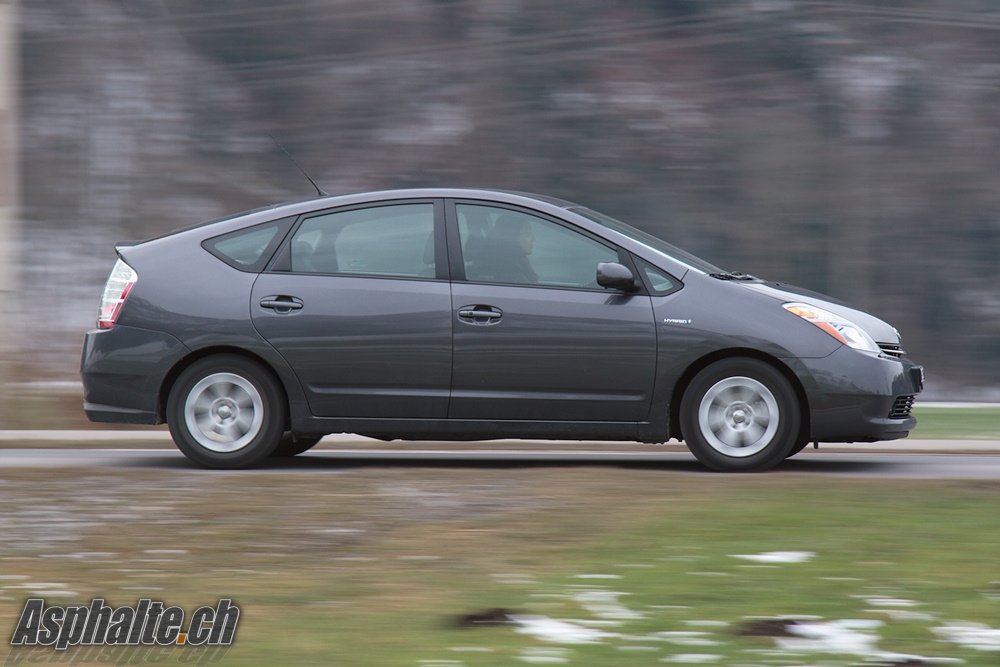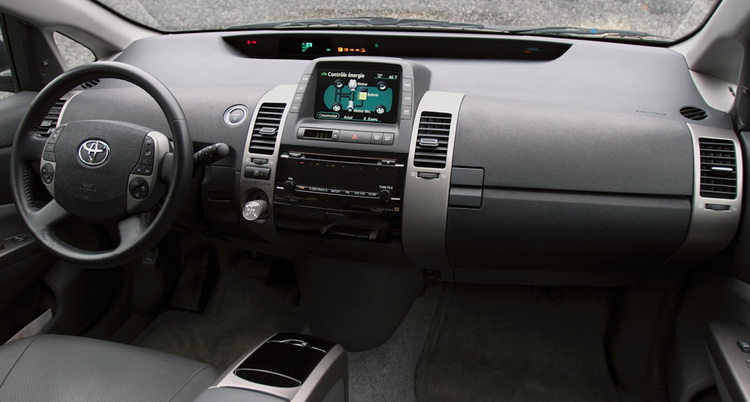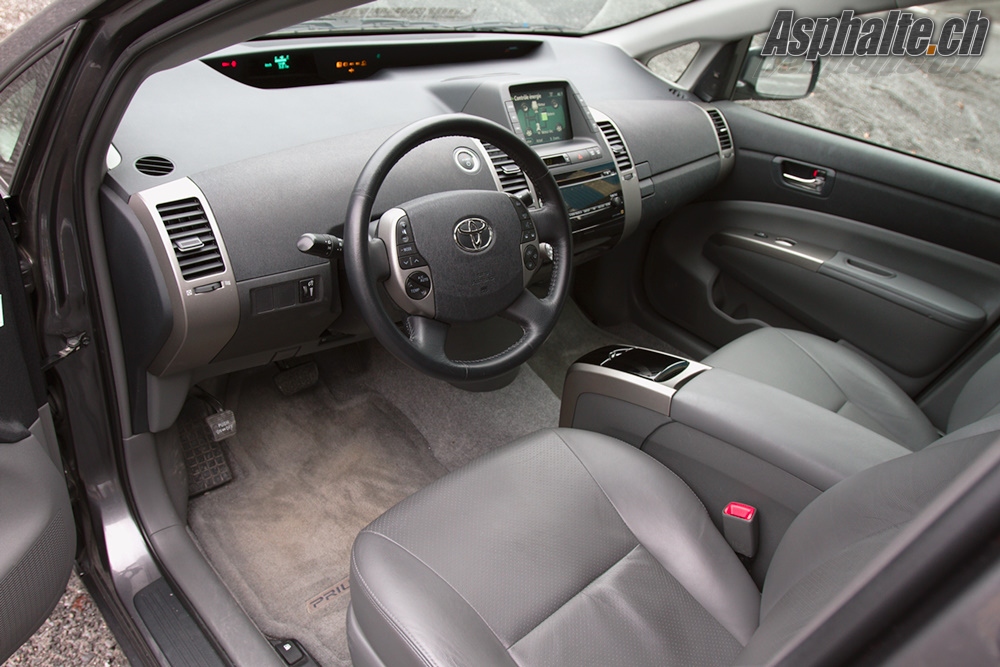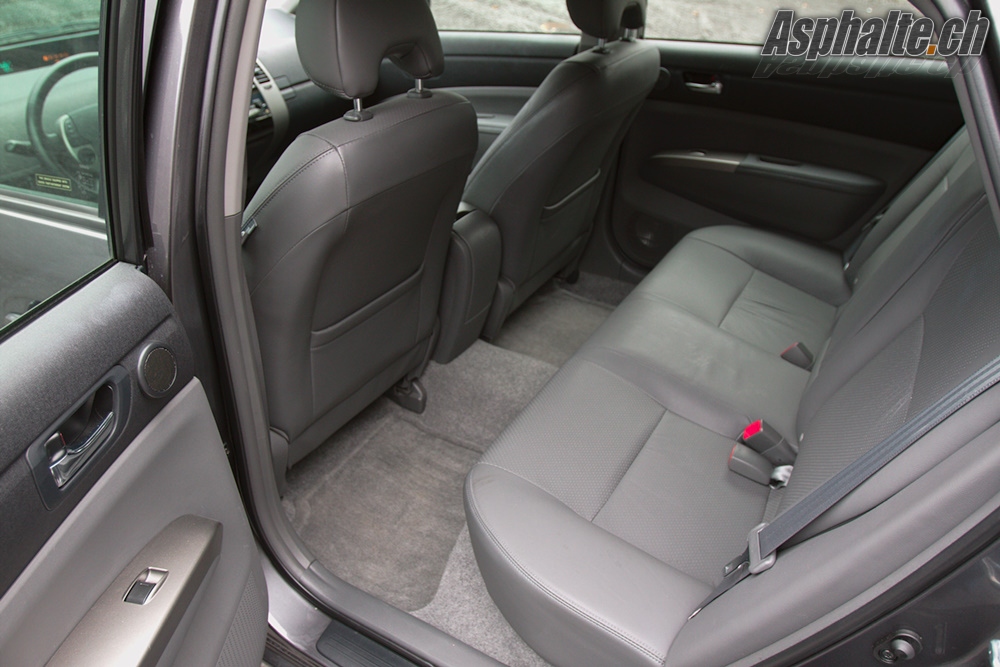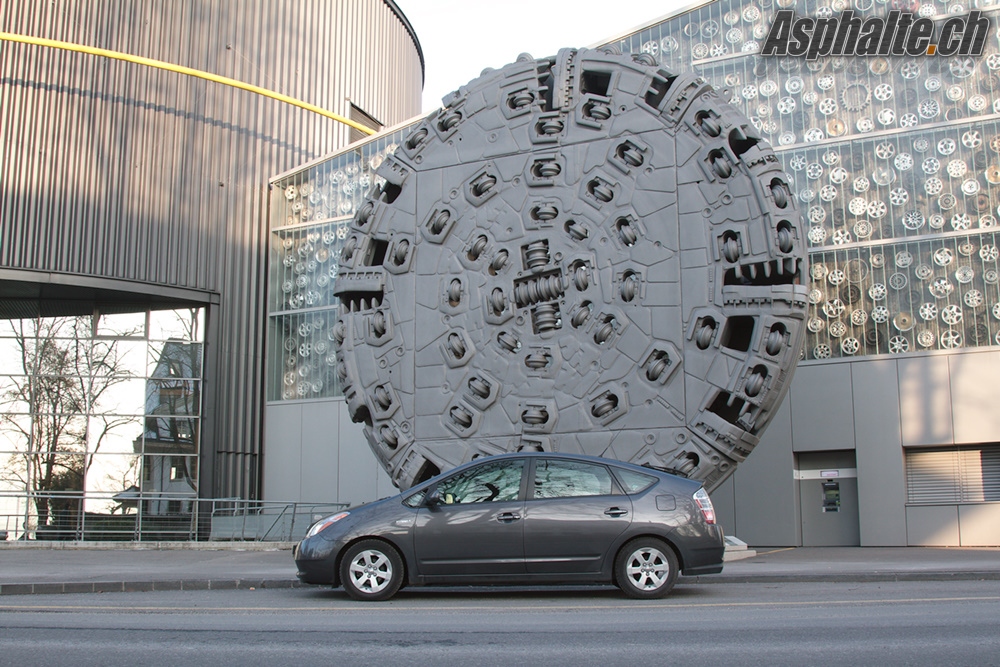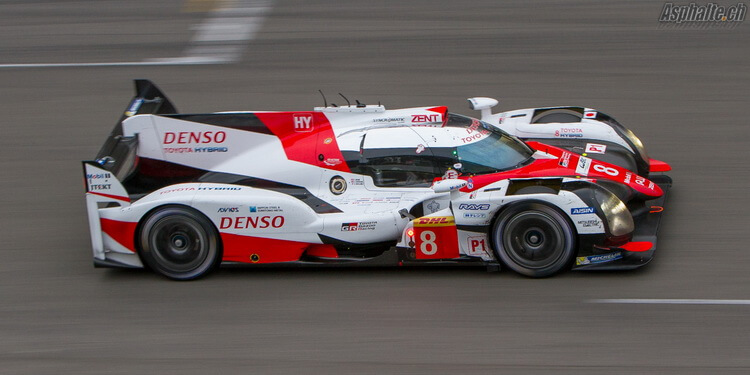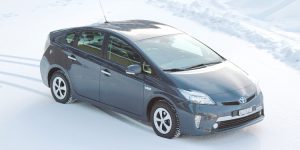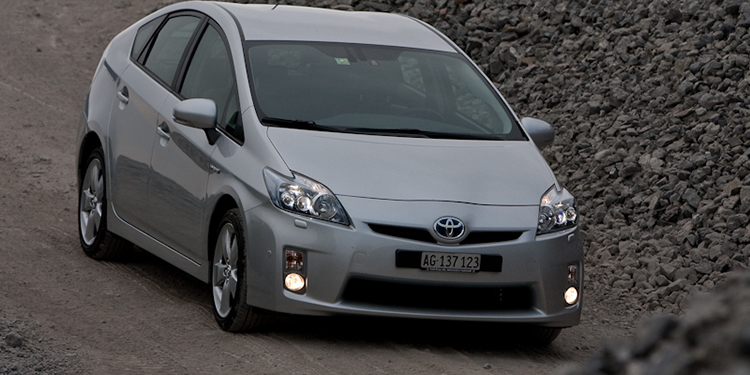Long term test: 50’000km in a Toyota Prius II
By smoothing the computer average with a polynomial approximation, a seasonal trend emerges, with minimas during summer months and peaks during winter months. Two possible explanations: battery efficiency and tires. The fact that summer 2012 was driven with old winter tires (Michelin Pilot Alpin in 195/55/16 size instead of the Good Year Integrity summer tires in 185/65/15) can be a significant contributor. Tire width, rubber hardness, the weight and inertia of 16 inch alloy rims, and the higher operating pressure of summer tires (3.0 bars front, 2.9 rear) all influence fuel consumption.
Beyond this seasonal swing, there is no sign of an overall adverse trend in gas mileage which could be indicative of a loss of battery capacity. Toyota engineers seem to have been hard at work to hone the management of the NiMH cells, limiting their use to half of the full theoretical charge, and scheduling periodic full discharge cycle in the firmware. The online gas mileage databases provide coherent data with 47.5 US mpg (4.95 L/100km) on GreenHybrid or 5.2 L/100km on Spritmonitor in Germany.
One of the most irritating shortcomings of the Prius II is the driving position. The seat is not adjustable in height, and designed for short people. My 182cm find themselves seating far too high, and the steering column angle adjustment does not bring a satisfactory solution. Headroom remains generous, but I have had to resolve myself to drive with the feeling that i am holding the steering wheel between my knees. The front seats also lack lateral support, but it is a minor gripe as nothing – or so little – entices aggressive driving and fast cornering. Rear passengers are very well treated with ample, luxury-sedan-league legroom.
The ergonomy of controls is well design, most important functions are available through clusters of buttons on the steering wheel itself, and the rest can be accessed easily through the resistive touch screen, with clear menu buttons on either sides. We do not use the voice command system, finger access to the settings is faster and, somehow, less distracting. The vacuum fluorescent display cluster is simple but efficient, but I stil regret the bizarre absence of a real dual trip computer with average speed computation. The gas mileage and energy recovery histograms are a useless gadget, the possibility to draw correlations between average speed and mileage would be far more informative in a car where fuel consumption is a key selling point, if not an obsession. I regret at times the absence of a rev counter, although the continuously variable transmission makes it impossible to influence it otherwise than through your right foot. I would just be entertained to know at times how fast or slow the small 1.5L four cylinder is revving.
The interior of the Prius II is finished with average quality materials, a mix of structured surfaces, slightly rubberized but difficult to clean, and textured surfaces with tend to scratch more easily. Fittings are accetable for the category, and I am pleased to report that no squeaks or rattles have developped, even on deformed tarmac. Assembly and structural integrity are good and well designed. The faux-leather has become shinier in the most exposed spots, but there are no advancesd signs of cracking or tearing.

